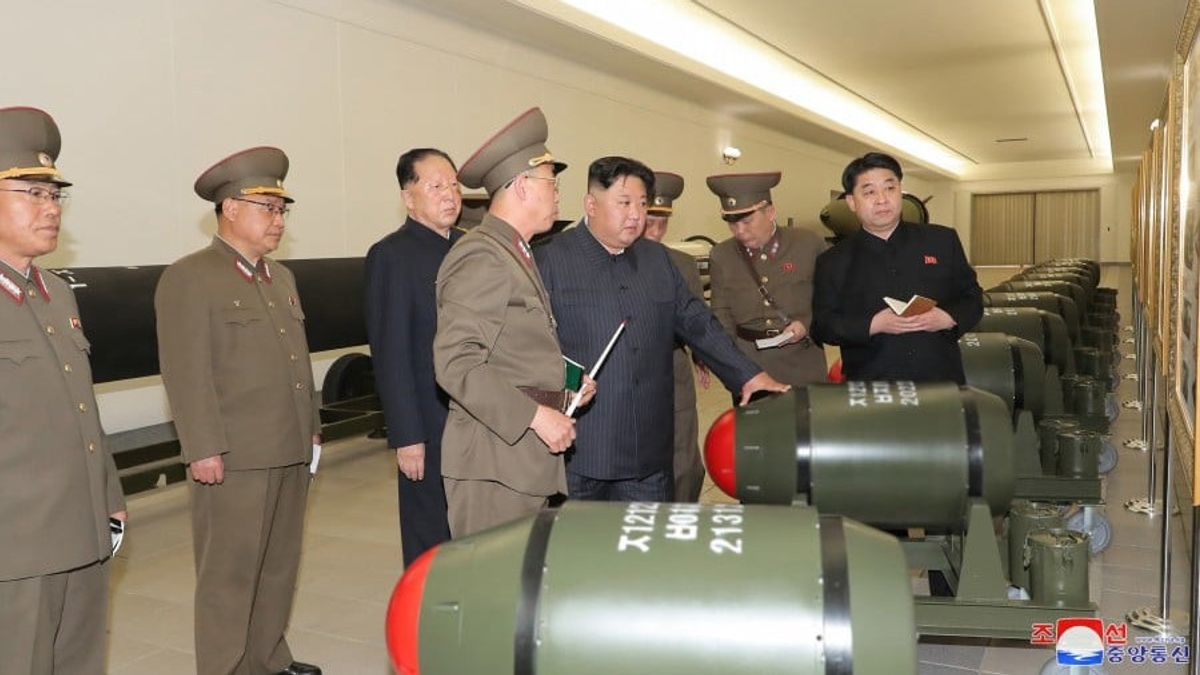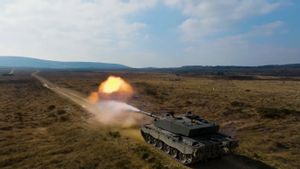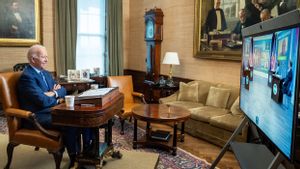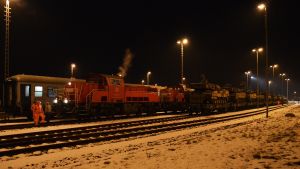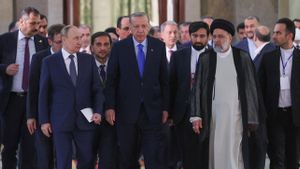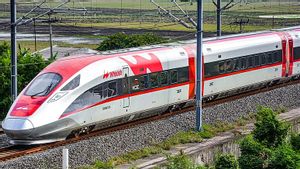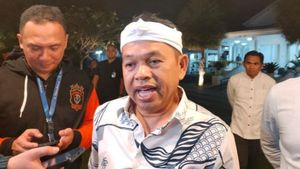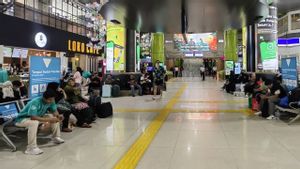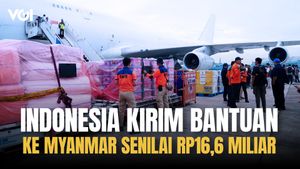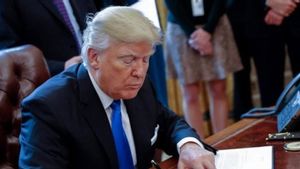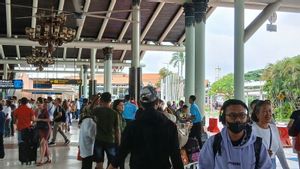JAKARTA - North Korea flaunted a new, smaller nuclear warhead, vowing to produce more weapons-capable nuclear material to expand the country's arsenal, state media KCNA reported on Tuesday, as a US aircraft carrier arrived in South Korea after joint military drills.
KCNA released photos of the warhead, dubbed Hwasan-31, when leader Kim Jong-un visited the Nuclear Weapons Institute, where he inspected new tactical nuclear weapons and technology for mounting warheads on ballistic missiles, as well as plans for nuclear counterattack operations.
The expert said the images could indicate advances in miniaturization of warheads that are powerful, but small enough to be mounted on intercontinental ballistic missiles capable of striking the US.
"It has something more powerful in a smaller space. That's worrying," said Kune Y. Suh, emeritus professor of nuclear engineering at Seoul National University, comparing the new warhead to the 2016 version.
Meanwhile, Kim Dong-yup, a former South Korean Navy officer who teaches at Kyungnam University, said the warhead was most likely designed for use with at least eight different delivery platforms, including missiles and submarines.

"It is not limited to tactical missiles but appears to be a standardized, lightweight, miniature warhead that can be mounted on a variety of vehicles," he explained.
"Now that the transport vehicles are almost ready, they will produce the warheads to secure a second strike capability - maybe hundreds, not dozens - while running the centrifuges even harder to get weapons-grade nuclear material," he added.
It said Kim Jong-un ordered the production of weapons-grade materials in a "far-sighted manner" to increase his nuclear arsenal "exponentially" and produce powerful weapons, KCNA said.
He said Pyongyang's nuclear power enemy was not any particular country or group, but "war and the nuclear holocaust itself." It is said, the policy of expanding weapons is solely aimed at defending the country, as well as regional peace and stability.
In addition, leader Kim was briefed on an IT-based integrated nuclear weapons management system called Haekbangashoe, meaning "nuclear trigger", whose accuracy, reliability, and safety were verified during a recent exercise simulating a retaliatory nuclear strike, KCNA reported.

Previously, North Korea has ratcheted up tensions, firing a short-range ballistic missile on Monday, as well as carrying out a nuclear counter-strike simulation last week against the US and South Korea, which it accuses of being rehearsing an invasion with their military drills.
North Korea's military conducted a simulated nuclear air strike with two tactical ballistic missiles equipped with dummy warheads during Monday's drills. Pyongyang also tested a nuclear-capable underwater drone on March 25-27, KCNA said in a separate statement.
The underwater drone, called Haeil-1, reached its target in waters off the northeast coast after sailing along a 600 km (373 mile) course for more than 41 hours, he said.
Separately, a US carrier group led by USS Nimitz docked at the Busan naval base in South Korea, after conducting joint maritime drills.
Rear Adm. Kim Ji-hoon of the South Korean Navy said the joint exercises were intended to enhance the US's broader deterrence, military capabilities, especially nuclear forces, to deter attacks on its allies, given North Korea's growing threat.
SEE ALSO:
Meanwhile, US strike group commander Rear Admiral Christopher Sweeney said his ships were prepared for any eventuality.
"We are not seeking conflict with the DPRK. We are seeking peace and security. We will not be forced, we will not be bullied, and we are not going anywhere," he told reporters. DPRK is an abbreviation of North Korea's official name, the Democratic People's Republic of Korea.
Pyongyang, meanwhile, accuses its allies of fueling tensions and using drills to rehearse for an invasion.
The English, Chinese, Japanese, Arabic, and French versions are automatically generated by the AI. So there may still be inaccuracies in translating, please always see Indonesian as our main language. (system supported by DigitalSiber.id)
